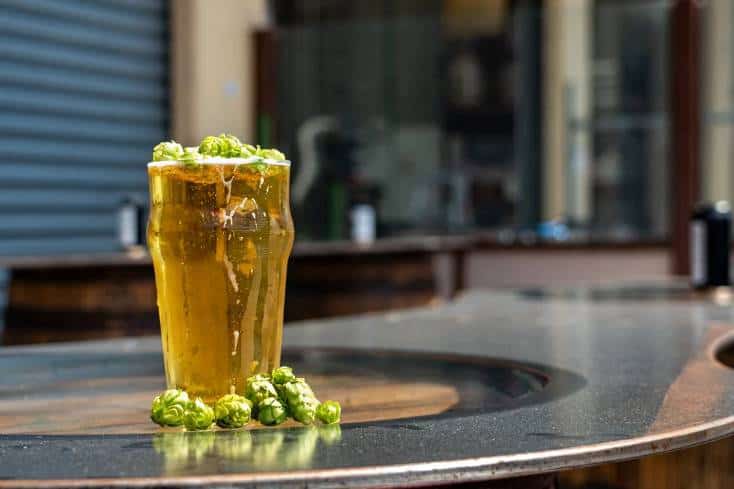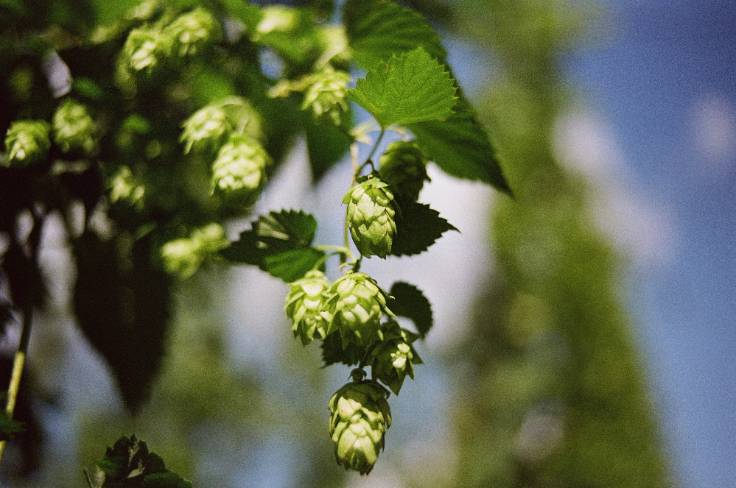
It’s Hop Harvest season in the Pacific Northwest and that marks the return of two special beer variations, Fresh Hop and Wet Hop beers.
And while these terms may sound similar, they represent distinct approaches in the brewing process. Here’s a breakdown of the differences between fresh hop and wet hop beers and how they influence the final product.
Some Hop Basics
Hops are the cone-shaped flowers of the hop plant (Humulus lupulus) and are a critical ingredient in beer. They contribute to the bitterness, aroma, and flavor profiles of the beer, balancing out the sweetness of the malt with their bitter notes and adding floral, citrus, pine, or earthy characteristics.
Most beers are brewed using dried hops, which have a longer shelf life and can be used year-round. However, fresh and wet hop beers use hops in their most natural state, right after being harvested, offering a seasonal and unique experience.
So What Are Fresh Hop Beers?
The term “fresh hop” generally refers to beers brewed with hops that have been harvested and used in brewing within a specific time frame, typically within 24 to 48 hours. The key here is the use of hops in their freshest form before any drying or processing occurs.
- Flavor Profile: Fresh hop beers are known for their bright, vibrant, and often more delicate hop character. You might taste more green, herbal, and floral notes compared to traditional dried hop beers.
- Seasonality: These beers are seasonal, as they can only be brewed once hops are harvested, which typically happens in late summer to early fall.
- Brewing Considerations: Since fresh hops contain more moisture than dried hops, brewers need to use a greater volume to achieve similar bitterness levels. The challenge lies in balancing the fresh hop flavors with the malt and other ingredients.
What Are Wet Hop Beers?
While the terms are sometimes used interchangeably, wet hop beers are a subcategory of fresh hop beers, but with a stricter definition.

(Courtesy Markus Spiske / Unsplash)
Wet hops are unprocessed, undried hops used within hours of being harvested, often even faster than fresh hops. The main difference between wet and fresh hops lies in how quickly the hops are used after being picked.
- Moisture Content: Wet hops retain all their natural moisture, as they have not been dried. This imparts a distinctive “green” or vegetal quality to the beer, with some beers taking on more grassy, resinous, or juicy hop flavors.
- Flavor Profile: Wet hop beers tend to have a more intense, earthy, and resinous character due to the high moisture content in the hops. The flavors are often described as more raw, fresh, and alive.
- Time Sensitivity: Wet hop beers require a very tight window for brewing. The hops must be used as soon as possible after harvesting to prevent spoilage and to capture the hops at their peak freshness.
Fresh Hop Beers vs Wet Hop Beers at a Glance
| Aspect | Fresh Hop Beers | Wet Hop Beers |
| Definition | Made with hops within 24-48 hours of harvest, before drying | Made with hops used immediately after harvest, with no processing |
| Moisture Content | Lower moisture than wet hops, but still fresh | High moisture content, as hops are unprocessed |
| Flavor Profile | Bright, herbal, floral, more delicate hop notes | Intense, earthy, vegetal, resinous, and “green” flavors |
| Seasonality | Late summer to early fall | Even more limited to hop harvest time |
Bottom Line…
Fresh hop and wet hop beers offer a deeper dive into the essence of the hop and if you’re a hop head they’re almost addictive.
Unfortunately the best fresh and wet hop beers are only available for an uber-short time in the Pacific Northwest where the majority of US hops are grown.
But if you’re a hop lover, fresh and wet hop beers offer a chance to experience hops at their most vibrant and flavorful, and are the consummate celebration of seasonal brewing.
 American Craft Beer The Best Craft Beer, Breweries, Bars, Brewpubs, Beer Stores, And Restaurants Serving Serious Beer.
American Craft Beer The Best Craft Beer, Breweries, Bars, Brewpubs, Beer Stores, And Restaurants Serving Serious Beer.
